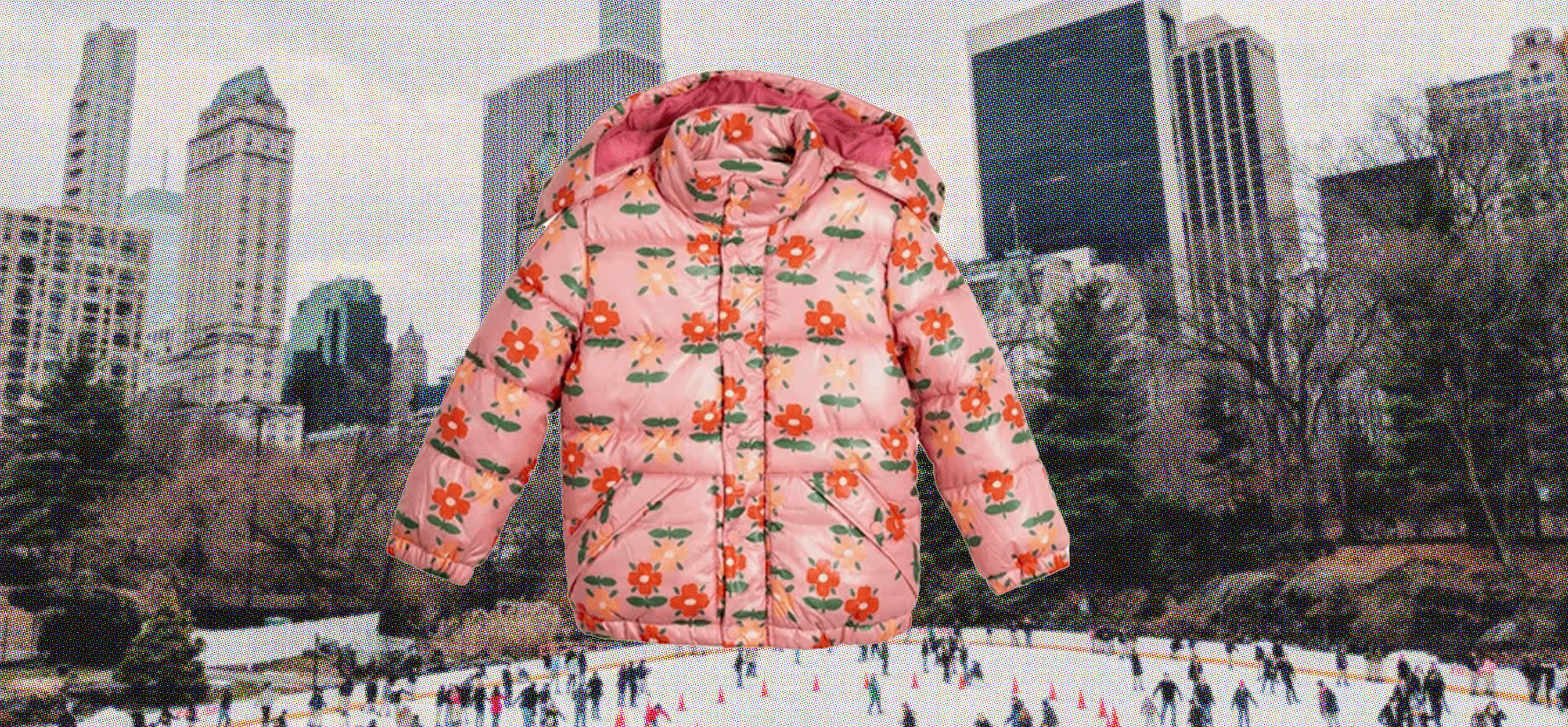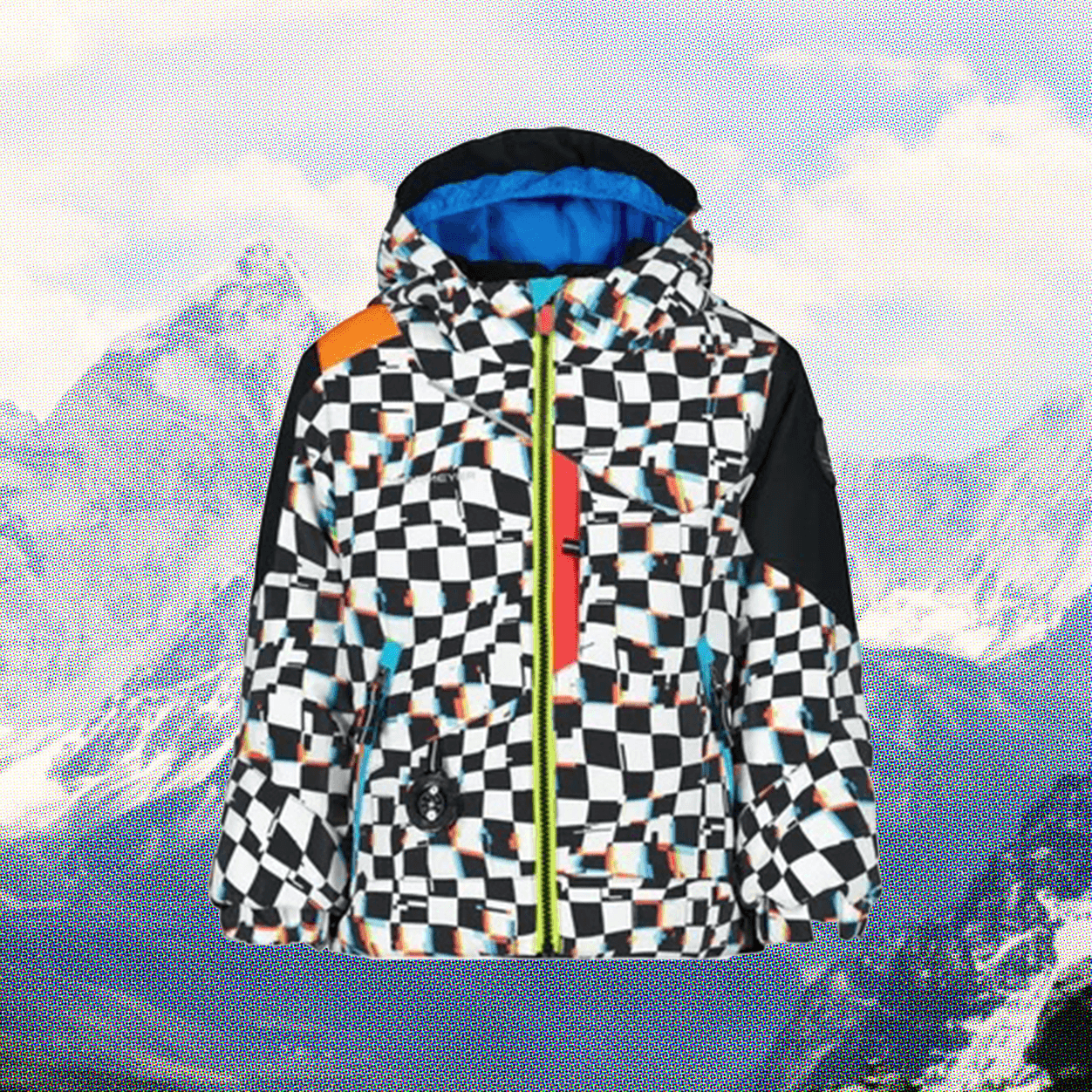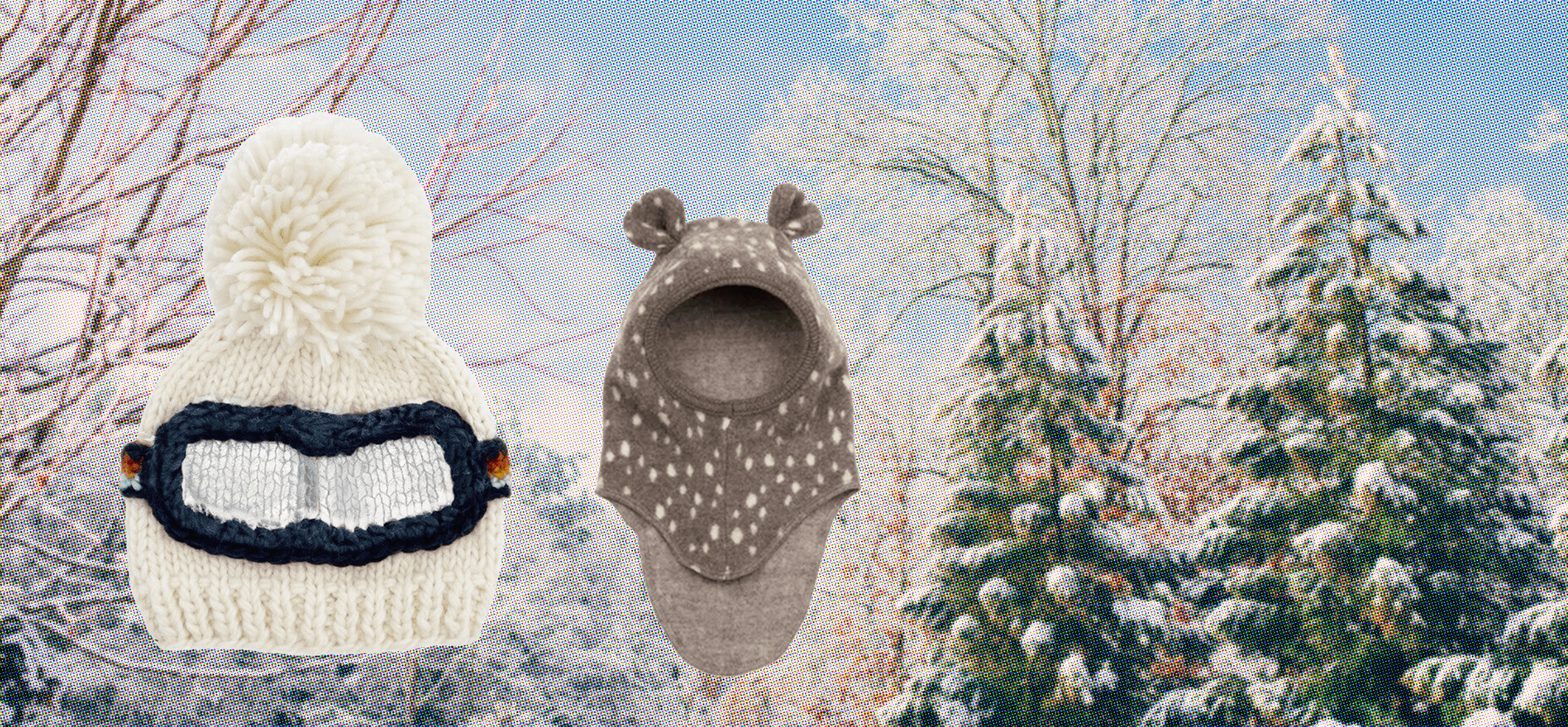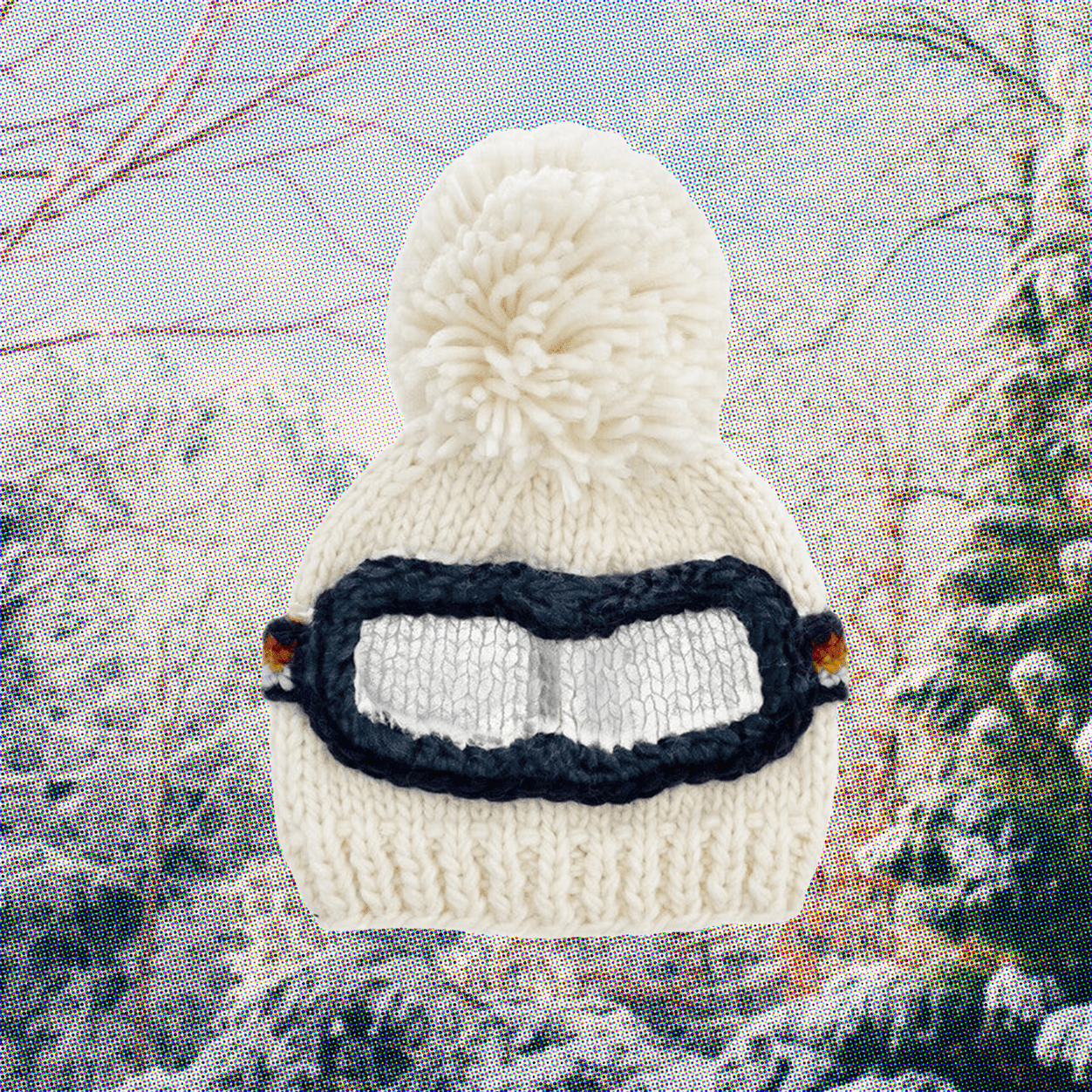
Gear
Tips for Dressing Kids in Winter
The goal? Not too hot, not too cold.
- Photography
- Images courtesy of the brands
- Written By
- Kaitlin Madden
Types of winter clothes for kids
First, the basics. There are endless options when it comes to winter gear for kids and toddlers, but it all breaks down into a few major categories.
They are:
-A breathable base layer (pants and a top)
-A mid-layer (fleece or sweater)
-Water-resistant jacket and snowpants (or a snowsuit for babies and toddlers)
-Mittens or gloves
-A hat
-A scarf or gaiter
-Thermal socks
-Water-resistant snow boots
Here’s an overview of each.
If you’ve been a parent for any length of time, you know dressing kids in winter can be an event. There are mittens to find and boots to tie. But, like applying head-to-toe sunscreen in the summer, dressing your children in the right cold weather gear is worth the effort, since it’ll help them enjoy the outdoors, and stay safe from the elements.
At the same time, dressing a child for subzero temperatures can also feel like a game of chance. If they’re too bundled, they start to sweat, or end up doffing the extra layers at school, where they’ll remain in the lost-and-found for eternity. Too little insulation and they come indoors almost as soon as you’ve finished zipping up that last layer.
To help you crack the cold-weather code and keep your kids cozy all winter long, we’ve broken down winter gear must-haves, plus tips for dressing kids, toddlers, and babies for sub-zero temps, below.
Base layer
The base layer goes on underneath all the snow gear, and its job is to wick moisture from the skin. The right base layer is breathable and snug, but not tight. If you’re simply sending your kids off to school or out to play in the snow, a long-sleeved cotton t-shirt and leggings or lightweight sweatpants will do just fine. However, if you’re planning to be outside for an extended period of time (skiing, tubing, watching an outdoor sports event), then consider a specialty polyester base layer or a pair of long underwear.
Mid-layer
The mid-layer goes on after the base layer and it’s meant to add warmth. This is the easiest layer to tailor to the weather because you’ll have lots of options. If it’s below freezing, go for a thick polyester fleece or zip-up, a lightweight down jacket, or a cotton or wool sweater. For warmer days (above 40 degrees fahrenheit), a lightweight cotton sweatshirt or a quilted vest will do.
The mid-layer you choose will also depend on your child’s other outdoor clothing. For example, if your child is wearing a snow bib underneath their jacket or has a heavy winter coat, you might want to choose a more lightweight mid-layer.


Winter coat
Your child’s winter coat plays a part in keeping them warm, but more importantly, it’s what protects them from the elements like rain, snow, and wind. Depending on where you live and the types of winter activities your family prefers, you’ll want to look for something that’s waterproof or at least water-resistant.
There are lots of options for children’s winter coats, from puffers to parkas, to multi-layer ski jackets, but it’s hard to go wrong with something waterproof, windproof and well-insulated.
Optional: Insulation layer or shell
Most coats for babies and toddlers (and many coats for kids) will have an insulation layer and shell in one. However, some specialty coats for skiing and outdoor recreation are sold as separate shells and/or insulation layers.
Oftentimes, soft, packable down jackets and puffers are insulation layers only, for example. If this is the case, you’ll want to ensure you pair the jacket with a water and wind-resistant shell, because a packable-style down jacket can quickly become soaked through in rain or snow conditions. Vice-versa if your child’s jacket is a lightweight shell without much filling, you’ll want to add an insulation layer for extra warmth.
Mittens and gloves
Mittens and gloves are a matter of your child’s preference, but mittens are often a better option for small children as they’re easier to put on, they’re warmer, and you won’t have to worry about your child constantly complaining that their fingers are coming out of their respective holes.
Like a jacket, the best mittens are waterproof and well-insulated.
Kids winter hats
After years of dressing kids for winter, our take is that the best winter hat is the one your child will keep on. Some kids will wear whatever you put on their head, while others are more particular and will only wear a certain type of hat. If your child has sensitive skin, steer away from natural wools and anything the could find itchy, and choose soft but warm fabrics like fleece or sherpa, instead.
If your toddler tends to lose their hat, purchase a version with a chin strap to keep it in place. Material is a big consideration for children’s winter hats for a number of reasons.
Gaiters or scarves
A gaiter or scarf may or may not be essential, depending on your child’s jacket and the layers they’re wearing underneath. If your child has a zip-up fleece that covers the neck, or their coat is hooded, they may not need a neck cover to stay warm. For young children, we recommend gaiters over scarves, since they won’t come loose or get lost or tangled.
Snow boots and socks
Kids seem to get cold from the toes up, so warm socks and the right winter boots are key to lasting outdoors any length of time. If your kids will be playing in the snow, waterproof boots are a must, as is a layer of insulation. If your littles are just learning to put on their own shoes, do yourself a favor and choose slip-on boots without laces, which make dressing for the snow so much easier.
When it comes to choosing socks, look for thermal options, or choices made from wool, fleece or acrylic. Choosing high socks will also ensure they don’t slip down inside snow boots.
Choosing snow clothes for toddlers
Winter gear for toddlers is similar to that for bigger kids, but with a few adjustments. Luckily, kids’ clothing manufacturers often have toddler-friendly designs built into their garments.
When looking for mittens, for example, you’ll often find styles with extra-long cuffs designed to go over your child’s coat, which helps keep mittens on little hands, while also keeping snow out. Built-in clips are also a convenient feature to look out for.
Cinched cuffs and a large, toddler-friendly zipper are essenial if you’re shopping for a coat.
Choosing snow clothes for babies
If you’re shopping for a baby that can’t yet walk, skip the winter coat and opt for a snowsuit instead. Snowsuits stay put better than two-piece outfits, and they usually have built-in mittens.
Planning to take the baby in the car? Dress them in warm base layers and bring a hat, mittens, warm blanket, or cocoon-style car seat cover if you’ll keep them in their bucket seat. Or bring along a snowsuit to change into when you reach your destination.


How to dress your child for cold weather
Now that you’ve got a mental checklist of all the layers you’ll need this winter, here’s a rundown of how they all fit together. While the concept is pretty simple, there is a proper formula to follow to ensure that your kids don’t get cold (or overheat).
First and foremost, gather all your kids’ winter gear in one spot before you start dressing them. That way, they can go straight outdoors when they’re ready. Once you’ve got them (and everyone’s gone to the bathroom!), it’s time to start dressing.
Start with a base layer that’s snug enough that it won’t feel bulky with a sweater or jacket on top. Then put on the snow pants, followed by the snow boots. (We find it easier to put on snow boots when kids have less gear on).
After that, it’s time for a mid-layer up top. A fleece or lightweight sweatshirt will do, depending on the weather. Follow that with a water-resistant jacket. Ensuring kids stay dry is just as important as ensuring they’re warm because a wet child will start to feel cold much faster than a dry one.
Finish off with a hat and gloves (and a gaiter if you’re using one), and send them on their way.
Tips For Dressing Your Kids This Winter
Make sure they're water-resistant.
In addition to dressing for the cold, you’ll also want to ensure that your kids’ clothing is water-resistant.
Down jackets work well for cold-weather days but quickly soak through unless paired with a waterproof shell.
Look for breathable fabrics.
When dressing your kids for the cold, breathable fabrics are key. They help sweat diffuse, preventing kids from overheating and keeping them comfortable.
Take advantage of clever design features.
The best cold-weather gear for kids will make your life (and your child’s) a little easier, so be on the lookout for design features that help make kids more comfortable. Here are a few to look out for:
-Cinched wrists. A coat with cinched wristbands can help keep snow from getting into your child's sleeves if you live where it snows a lot.
-Underarm vents: If your child tends to get hot, underarm vents (zippers in the armpit area of the coat) will make it easy to cool down without removing a layer. Ski coats often have this feature.
-A snow skirt: Snow skirts are attached to the inside of a jacket, usually at waist level, and are designed to keep snow from going up the jackets of skiers. But snow skirts also come in handy for sledding, tubing, and just playing in the snow.
-Built-in layers: 3-in-1 jackets include a base layer and a shell that can be zipped together to make an insulated jacket, or used separately depending on the weather.
-A 'zipper garage': Yep, a zipper garage. It's a small piece of fabric that covers the zipper when your child's coat is zipped up and prevents it from chafing the chin and neck.
Here are a few to look out for:
-Cinched wrists. A coat with cinched wristbands can help keep snow from getting into your child's sleeves if you live where it snows a lot.
-Underarm vents: If your child tends to get hot, underarm vents (zippers in the armpit area of the coat) will make it easy to cool down without removing a layer. Ski coats often have this feature.
-A snow skirt: Snow skirts are attached to the inside of a jacket, usually at waist level, and are designed to keep snow from going up the jackets of skiers. But snow skirts also come in handy for sledding, tubing, and just playing in the snow.
-Built-in layers: 3-in-1 jackets include a base layer and a shell that can be zipped together to make an insulated jacket, or used separately depending on the weather.
-A 'zipper garage': Yep, a zipper garage. It's a small piece of fabric that covers the zipper when your child's coat is zipped up and prevents it from chafing the chin and neck.
Use a stroller sack or a car seat cocoon.
If you live in the city or walk your kids regularly in a stroller, a winter stroller sack is a must-have. These sleeping bag-like accessories cover your stroller seat and zip around your child like a sleeping bag. It's almost guaranteed to keep them toasty while you speed-walk to daycare on those below-freezing days.
Consider your kids' activity levels.
Besides the weather, the other factor that'll play into how warm to dress your children is their activity level. For example, suppose you're headed outside to do something vigorous like sledding. In that case, your kids will quickly start to sweat and get hot if they're overdressed, so resist the urge to over-bundle them. At the same time, if you're doing something static, you'll likely want to add an extra layer since the cold will creep in quicker.